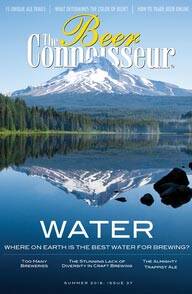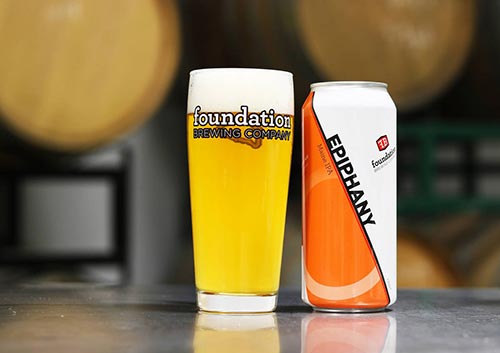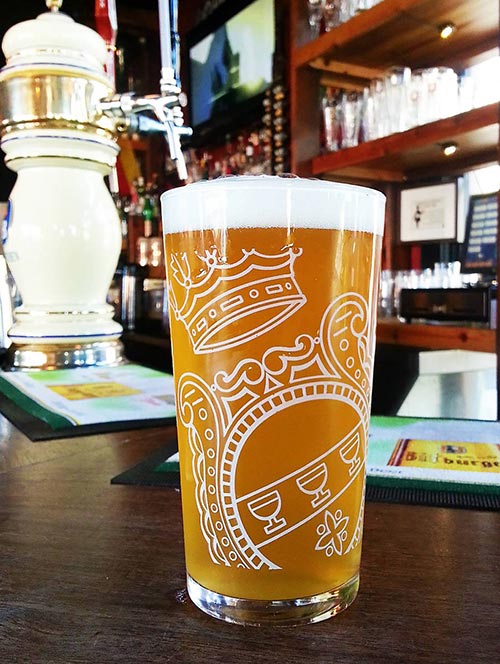Start 14-Day Trial Subscription
*No credit card required

What is Unfiltered Beer?
Why are these hazy beer styles among the most popular in craft beer and brewing these days?
Nothing gets beer geeks and connoisseurs riled up these days like a strikingly hazy New England IPA. There’s something about the opaque, orange-yellow liquid that sends craft beer enthusiasts into a tizzy. Many a skeptic has been won over with a whiff of that insanely fruity aromatic punch. Hazy IPAs are not the only beers that qualify as unfiltered, as the venerable Kellerbier style, as well as various Witbiers, Berliner Weisses and other sour offerings are also unfiltered. So what exactly is an unfiltered beer and why are these styles among the most popular in the world right now?
Filtration can be performed through various methods depending on beer style. For example, beer can be filtered by passing through a caked or powdered substance in order to filter out any brewing particulates that occur. One common filter is finings, which can sometimes include swim bladders of fish as a filtering agent.
If a beer is lautered ‒ a process in which the mash is separated into the clear liquid wort and the residual grain ‒ the grain bed serves as its own filtering agent. In a lager beer, gravity filters the beer with many particulates falling to the base of a bright tank. Cold filtering is another option: lower temperatures during filtration cause proteins to lump together, making them easier to remove.
Headline Photo: Courtesy Bissell Bros. Brewing Co.

Nothing gets beer geeks and connoisseurs riled up these days like a strikingly hazy New England IPA, such as Foundation Brewing Co.'s Epiphany Maine IPA.
Photo Courtesy John Bonney
Unfiltered beers used to be incorrectly thought of as dirty or unfinished. Crystal clear pilsners and lagers won the beauty contest in the early days of American craft brewing, as the striking image of a light yellow, champagne-like pils is still perhaps the most evocative beer image to the masses. But at what cost?
Sure, those lagers are technically demanding to brew and are certainly thirst-quenching, but by filtering beers heavily, complexity of both flavor and aroma are lost in favor of appearance – a shallow reason to deaden a beer’s sensory impact.
Perhaps the oldest example of an unfiltered beer still produced today is Kellerbier (or Zwickel Lager), which means “cellar beer” because it was stored in cool cellars or caves during maturation.
Brauerei C. & A. Veltins’ Grevensteiner Original, which is now available stateside in cans, was one of the first modern iterations of this style. Grevensteiner pours with a very minimal foam stand and has a soft, malty mouthfeel eschewing bitterness in favor of a “complex flavor that is first dominated by caramel with a slight undertone of honey, roasted almonds, and fresh fruity flavors of green apple,” according to the brewery. Another well-crafted Kellerbier example is Summit Brewing Co.'s 30th Anniversary Keller Pils, which was one of our highest-rated beers of 2016.

Perhaps the oldest example of an unfiltered beer still produced today is Kellerbier, like this example from Sünner Brauerei.
Photo Courtesy Flickr/Dan K
Perhaps the singular word that expresses the greatest difference between filtered and unfiltered beers is “soft.” Nowhere is that softness more apparent in unfiltered beers than the strikingly different approaches taken to American IPAs in recent years.
The single most notable style parameter for American IPAs and Double IPAs throughout their history has been that lip-smacking snap of bitterness that occurs due to an immense IBU quotient as well as an often hearty malt bill to balance out the heavily hopped style.
Aggressive, powerful West Coast IPAs from such breweries as Stone, Russian River, AleSmith, Elysian and others are all notable for their massively bitter flavor profile. Stone’s Ruination line, for example, played on the idea that its massive bitterness levels would “ruin” a palate (in a good way, of course).
All of these beers were uniformly filtered and were a crystal clear bright orange color with an immense, frothy head of tan or beige bubbles.



